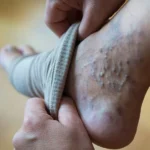Dermatology focuses on the health of the skin, hair, and nails, and this medical field addresses a range of conditions, from acne to complex diseases. Dermatologists diagnose and treat these issues using an evolving array of methods. Here are some advances in dermatology for skin health:
Mohs Surgery
Mohs surgery is a precise surgical technique used for treating types of skin cancer, often basal cell carcinoma and squamous cell carcinoma. During the procedure, a dermatologist removes thin layers of cancerous skin tissue. Each layer is examined under a microscope, and the process continues until no cancer cells are detected in the examined tissue sample. Unlike traditional excision, Mohs surgery allows as much healthy tissue as possible to be preserved.
This process is typically performed in an outpatient setting and reduces unnecessary removal of non-cancerous skin. This is beneficial in areas where tissue conservation matters, such as the face. The accuracy of this approach lowers the likelihood of needing additional treatments for incomplete excision.
After each layer is removed, patients may wait while the tissue is processed in an on-site laboratory. If cancer cells are identified at the margins, the dermatologist targets only the affected areas, removing further tissue with precision. The technique reduces the risk of scarring compared to wider excisions. Mohs surgery is often used for recurrent cancers and tumors with indistinct borders.
Laser Treatments
Dermatology frequently utilizes laser treatments to address both medical and cosmetic skin concerns. Lasers use focused light energy to target pigment, blood vessels, or water within the skin. This energy produces controlled heat to:
- Remove abnormal tissue
- Minimize unwanted pigmentation
- Stimulate collagen growth
There are various lasers, such as ablative lasers, which remove the top layers of the skin to treat deep wrinkles and scars. Non-ablative lasers bypass the outer skin layer and focus energy beneath the surface, aiming to improve skin tone and texture. Pulsed dye lasers can target blood vessels to address redness and broken capillaries, while fractional lasers help with acne scars and sun damage.
Laser treatments often involve multiple sessions, depending on the nature and severity of the skin issue. Side effects may include redness, swelling, mild discomfort, or temporary pigment changes. Consulting a board-certified dermatologist helps determine which laser treatment is suited for your skin health goals.
Light Therapy
Light therapy uses controlled ultraviolet (UV) light to manage skin conditions. Dermatologists use this technique for conditions such as psoriasis, vitiligo, and some types of eczema. The therapy works by slowing abnormal cell growth or modifying immune responses in the skin. Light therapy is performed under medical supervision, and treatments are tailored to each individual’s diagnosis, skin type, and overall health.
There are several light therapy approaches. Narrowband UVB uses a specific part of the UV spectrum, reducing exposure time while still delivering effective results. Psoralen plus UVA (PUVA) combines a medication called psoralen with UVA light to increase treatment effectiveness for some conditions. Sessions usually take place in a clinic, and protective eyewear is provided to limit side effects.
Visit a Dermatology Clinic
Developments in dermatology provide multiple options for managing skin health. From surgical techniques like Mohs surgery to innovative light-based and laser treatments, dermatology offers diverse and targeted options for a range of skin concerns. If you have questions about your skin or would like guidance, schedule a consultation with a dermatologist today.









